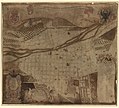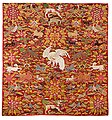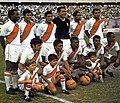Introduction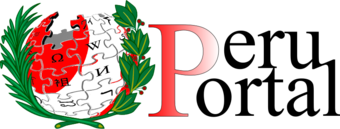
Peru, officially the Republic of Peru, is a country in western South America. It is bordered in the north by Ecuador and Colombia, in the east by Brazil, in the southeast by Bolivia, in the south by Chile, and in the south and west by the Pacific Ocean. Peru is a megadiverse country with habitats ranging from the arid plains of the Pacific coastal region in the west to the peaks of the Andes mountains extending from the north to the southeast of the country to the tropical Amazon basin rainforest in the east with the Amazon River. Peru has a population of over 32 million, and its capital and largest city is Lima. At 1,285,216 km2 (496,225 sq mi), Peru is the 19th largest country in the world, and the third largest in South America. Peruvian territory was home to several cultures during the ancient and medieval periods, and has one of the longest histories of civilization of any country, tracing its heritage back to the 10th millennium BCE. Notable pre-colonial cultures and civilizations include the Caral–Supe civilization (the earliest civilization in the Americas and considered one of the cradles of civilization), the Nazca culture, the Wari and Tiwanaku empires, the Kingdom of Cusco, and the Inca Empire, the largest known state in the pre-Columbian Americas. The Spanish Empire conquered the region in the 16th century and Charles V established a viceroyalty with the official name of the Kingdom of Peru that encompassed most of its South American territories, with its capital in Lima. Higher education started in the Americas with the official establishment of the National University of San Marcos in Lima in 1551. Peru's population includes Mestizos, Amerindians, Europeans, Africans and Asians. The main spoken language is Spanish, although a significant number of Peruvians speak Quechuan languages, Aymara, or other Indigenous languages. This mixture of cultural traditions has resulted in a wide diversity of expressions in fields such as art, cuisine, literature, and music. (Full article...) Entries here consist of Good and Featured articles, which meet a core set of high editorial standards.
 Coropuna is a dormant compound volcano located in the Andes mountains of southeast-central Peru. The upper reaches of Coropuna consist of several perennially snowbound conical summits, lending it the name Nevado Coropuna in Spanish. The complex extends over an area of 240 square kilometres (93 sq mi) and its highest summit reaches an altitude of 6,377 metres (20,922 ft) above sea level. This makes the Coropuna complex the third-highest of Peru. Its thick ice cap is the most extensive in Earth's tropical zone, with several outlet glaciers stretching out to lower altitudes. Below an elevation of 5,000 metres (16,000 ft), there are various vegetation belts which include trees, peat bogs, grasses and also agricultural areas and pastures. The Coropuna complex consists of several stratovolcanoes. These are composed chiefly of ignimbrites and lava flows on a basement formed by Middle Miocene ignimbrites and lava flows. The Coropuna complex has been active for at least five million years, with the bulk of the current cone having been formed during the Quaternary. Coropuna has had two or three Holocene eruptions 2,100 ± 200 and either 1,100 ± 100 or 700 ± 200 years ago which generated lava flows, plus an additional eruption which may have taken place some 6,000 years ago. Current activity occurs exclusively in the form of hot springs. (Full article...)Selected image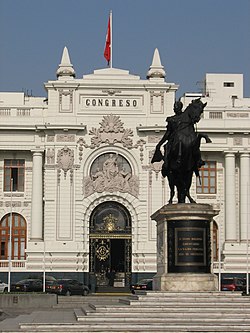 Photo credit: Ericbronder
The Peruvian Legislative Palace (Spanish: Palacio Legislativo) houses the unicameral Congress of the Republic of Peru (Congreso de la República) with its 120 Members of Congress (Congresistas). The current building was finished in 1938, during the presidency of Óscar R. Benavides. It is located on Bolívar Square, named in honor of the South American independence leader Simón Bolívar whose statue is in front of the building. (more...) Selected battleThe Colombia-Peru War (September 1, 1932 - May 24, 1933) was an armed conflict between the Republic of Colombia and the Republic of Peru. The War was the result of dissatisfaction with the Salomón-Lozano Treaty and the imposition of heavy tariffs on sugar and started with an internal insurrection in Peru, a civilian takeover of the city Iquitos. On the first of september President Luis Miguel Sánchez dispatched two regiments of the Peruvian Army to Leticia and Tarapacá, both Peruvian settlementes in the Amazonas Region in present day southern Colombia. (more...) In this month
General imagesThe following are images from various Peru-related articles on Wikipedia.
Selected article -Ollanta Moisés Humala Tasso (Spanish pronunciation: [oˈʝanta mojˈses uˈmala ˈtaso]; born 27 June 1962) is a Peruvian politician and former military officer who served as President of Peru from 2011 to 2016. Originally a socialist and left-wing nationalist, he is considered to have shifted towards neoliberalism and the political centre during his presidency. Born to a prominent political family affiliated with the ethnocacerist movement, Humala is the son of famed Quechua labour lawyer Isaac Humala. Humala entered the Peruvian Army in 1981, eventually achieving the rank of lieutenant colonel. During his time in the military, he fought in the internal conflict against left-wing terrorist group Shining Path as well as in the Cenepa War with neighboring Ecuador. In October 2000, Humala attempted an unsuccessful coup d'etat against President Alberto Fujimori during the dying days of his regime; eventually, the Congress of the Republic of Peru granted him amnesty and Humala was allowed to return to military duty. (Full article...)Did you know (auto-generated) -
CategoriesRelated portalsSelected quote -
English art historian, writer, antiquarian and politician Horace Walpole 1717–1797
Basic facts & figuresMore did you know...
Peru TopicsRecognized content
Featured articlesFeatured listsGood articles
WikiProjectsThings you can do
New articlesThis list was generated from these rules. Questions and feedback are always welcome! The search is being run daily with the most recent ~14 days of results. Note: Some articles may not be relevant to this project.
Rules | Match log | Results page (for watching) | Last updated: 2024-06-12 21:27 (UTC) Note: The list display can now be customized by each user. See List display personalization for details.
Associated WikimediaThe following Wikimedia Foundation sister projects provide more on this subject:
Discover Wikipedia using portals | |||||||||||||||






